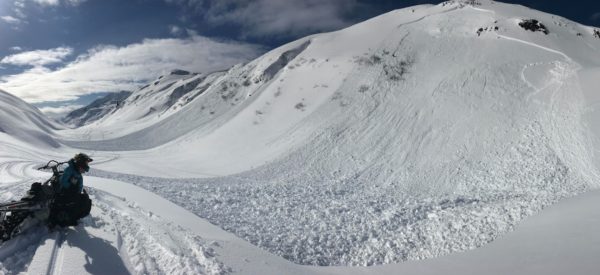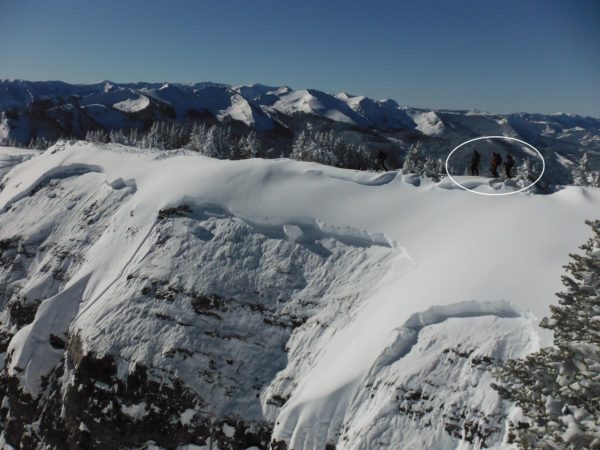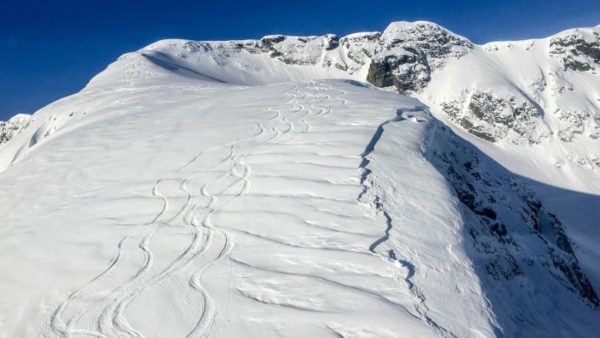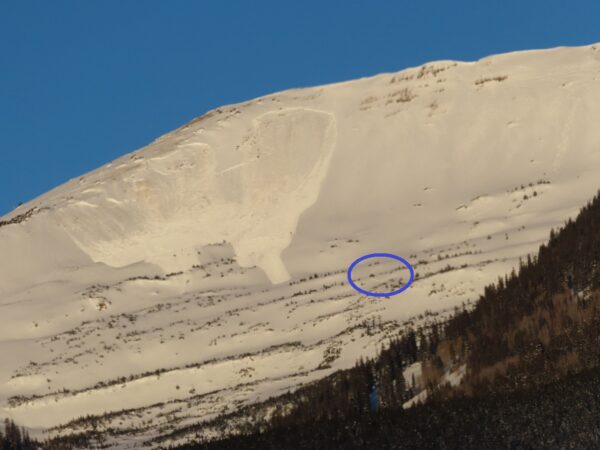An avalanche that releases on an adjacent slope away from the location from which it was triggered.
A remotely triggered avalanche occurs when a crack is initiated and propagates into adjacent terrain before causing a slab to release. Remote triggers are scary because you don’t need to be on a steep slope to cause an avalanche. Under certain conditions, you can initiate an avalanche while traveling on a flat slope below, above, or adjacent to an avalanche path. Managing overhead hazards is essential when there is remote triggering potential.

Snowmobilers remotely triggered these avalanches while riding in the flat terrain below the slope. Credit: Chugach National Forest Avalanche Information Center

The skiers (circled in white) remotely triggered these avalanches from above the slope. Credit: Crested Butte Avalanche Center



